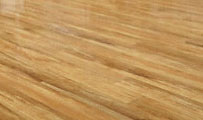Despite a comeback in new home construction, conditions within the flooring industry in Australia remain extremely challenging according to leaders within the industry. Source: Sourceable
Australian Timber Flooring Industry Association CEO Randy Flierman said that notwithstanding a recent upturn observed during most of the past year, quarterly data that his organisation has collected regarding the timber segment of the market specifically since the middle of 2010 indicated a 60% decline in the production and sale of local timber species for flooring during that time.
Moreover, while other products such as laminates, bamboo, pre-finished solids and engineered timber were continuing to do reasonably well and were finding their own respective place in the market, traditional products such as parquetry and cork were also struggling.
Mr Flierman said underlying challenges of recent years have extended beyond competition from imports and have largely reflected underlying weakness in consumer sentiment.
“Only a small part of the decline [in timber flooring] has been picked up by imported products such as bamboo, laminates and engineered Oak flooring, suggesting the decline is both related to consumers’ changing habits over the four year downturn in consumer confidence, looking for a lower price-point; and consumers also showing preference for other purchase priorities such as vehicles and IT/electrical goods,” he said.
Michael Keam, strategic marketing manager of Armstrong World Industries (Aust) Pty Ltd agrees that conditions are tough.
He said suppliers within the commercial space in particular have been left ‘fighting for the crumbs’ amid a pull back in government investment in public sector buildings.
Mr Keam said Australia “certainly has a high level of suppliers of materials to the flooring industry,” and that as a developed nation and wealthy economy the Australian market is seen by some as an opportunity for higher margins compared with other markets.
While potential importers see places such as China as an easy place to source inexpensive product, Mr Keam warned service levels and support once materials are delivered could be problematic.
Armstrong employs a sourcing and technical support team based in China to conduct regular site visits and to liaise with local vendors.
Mr Flierman agrees that international competition has intensified, albeit with this being somewhat mitigated at the moment with the decline in the Australian dollar.
He said while lower-priced products such as bamboo and laminate did well in a low confidence environment during the GFC, European Oak had become much more prominent in recent times.
When it comes to sustainability, Mr Flierman said local flooring materials come predominately from Australian Forestry Standard certified projects and generally ‘win hands down’ compared with imported products.
He added that wide board sales are becoming increasingly popular with consumers taking preference to 180-millimetre wide boards and shifting from strip timber flooring on joists to 14-millimetre thick overlay on ply over concrete slabs.
Mr Keam agrees that sustainability has become increasingly important. He said increasingly aware and environmentally conscious consumers are identifying areas of concern for their particular circumstances, and are requiring detailed information on things such as the chain of custody of timber, indoor air quality (TVOC levels), maintenance requirements and slip and fire resistance.
The flooring sector is benefiting from recent growth in residential construction, with Mr Flierman saying there has been a general pickup in conditions in recent quarters. He said timber flooring specifically was benefiting from the growth in multi-residential building and that it was a ‘myth’ that solid timber flooring could not be installed in multi-residential properties.
“The timber flooring industry generally is benefiting from the growth in multi-residential building, those with targeted marketing and solutions for acoustically rated floors are doing well, both from a producer and installer perspective,” he said.
“The important factor is that every building is different and no one acoustic system serves all situations, using installers experienced in this area is vital.
“To destroy a myth, in addition to laminates, bamboo and engineered flooring, solid timber floors can be installed in multi-residential properties, with a wide range of acoustic solutions available, one can be found to suit the majority of timber flooring projects.”






